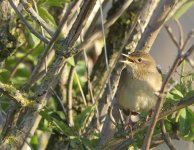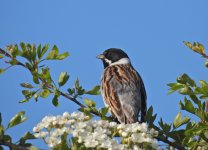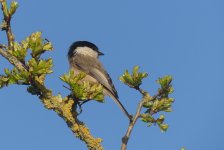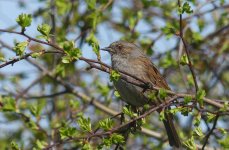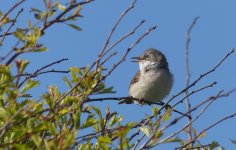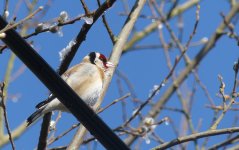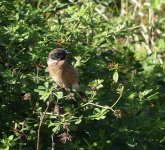Hi Paul, I would definitely be interested to get some guidance from you. I understand what you mean with defining what is sharp and what's not. While I get a bird with a sharp and focussed eye, the feathering is all blurry. Your images of the whitethroat for instance is 'sharper' in this respect than the reed bunting. My best pic is worse around the edges of his body and feathers if that makes any sense.
No bother.
I know you didn't ask for this part, but I'll carry on anyway.
'Don't get lost in the technical aspects of the camera. I went for a few basic settings and have done the same with the Nikon P950. I think the FZ330 has a better lens than the P950: the difference is the zoom. There will be experienced photographers out there who can get more from the FZ330 but as we're not in that bracket it could be a good idea to keep the camera settings simple as a start.
There's a demonstration by Graham Houghton on the FZ330 on YouTube. It will take you 10 minutes to set up. I pretty much used his settings. I did experiment but in the end broadly didn't move from what he recommended.
The focus I used was the equivalent of manual spot on the Nikon P950. I can't remember the Panasonic term but it simply means the smallest area which will ensure your focus is on the bird's eye rather than the whole of the bird's body or some branch. All of the yellow blocks stuff where you move the focus on the screen, I didn't bother with that: who finds a bird just sat in the same spot for a minute while you mess around with the buttons! You set manual spot up once, the camera stores that, and that's it, done, no messing around with buttons when a bird lands near you.
I tried various focus options and so on, and there wasn't much difference to my eye when looking at the image. When I first bought the FZ330 I had it in my mind that there were some magic buttons somewhere that would deliver picture gold, but on reflection I'd be surprised were that the case. Keep it simple, use Graham's settings, don't overdo the options because there's not much difference in the outcome.
In terms of your picture, yes, it hasn't turned out well on a bright day, but the good news is that you can fix that within a day.
Go with Graham's settings and practice holding the camera steady: that really makes a difference. It's easiest to keep the camera steady when lying on your stomach with your elbows on the ground or sat down with your elbows in your thighs. 'Just roll around in the grass and mud, do what you have to do to get closer and to be lying down in order to keep the camera steady; and who cares what dog walkers and the like think. While you're lying down, have the camera pulled into your forehead and when you've found focus with the half press, concentrate on not letting the camera move downwards on your full press ('sounds easy, but it takes a bit of practice for it to become second nature).
Put it on aperture mode, ISO not higher than 400 and let the camera deliver the shutter speed: use that as a start.
Oh, and as part of Graham's tutorial he'll have you reset the settings to default/factory before activating his settings.






